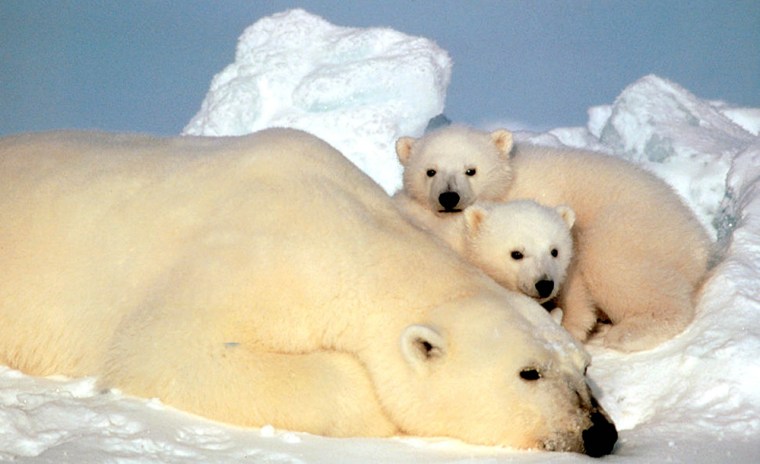Publishing in the journal Nature this week, a NASA-led team of scientists has come up with what it said is the first study to show a direct link between humans, climate change and impacts.
The experts said they had linked physical and biological impacts since 1970 with rises in temperatures during that period. Those impacts range from permafrost thawing in the Arctic, to plants blooming earlier across Europe and lakes declining in productivity in Africa.
"This is the first study to link global temperature data sets, climate model results, and observed changes in a broad range of physical and biological systems to show the link between humans, climate and impacts," Cynthia Rosenzweig, the lead author of the study, said in a statement issued by NASA.
Rosenzweig, who is with NASA's Goddard Institute for Space Science in New York, and peers at 10 other institutions said the link holds true at the scale of individual continents — particularly in North America, Europe and Asia because of better data gathering there.
The experts built and analyzed a database of more than 29,000 data series pertaining to observed impacts — data from about 80 earlier studies, each with at least 20 years of records.
The team said it also showed that, at the global scale, about 90 percent of observed changes are consistent with warming. "Other driving forces, such as land use change from forest to agriculture, were ruled out as having significant influence on the observed impacts," the NASA statement said.
"Next, the scientists conducted statistical tests and found the spatial patterns of observed impacts closely match temperature trends across the globe, to a degree beyond what can be attributed to natural variability," NASA added. "The team concluded observed global-scale impacts are very likely because of human-caused warming."
Rosenzweig also released this list of the key observed impacts by continent:
North America
Europe
- Changes in leaf-unfolding and flowering and animal growing phases in 19 European countries. Examples are hazel, lilac, apple, linden, and birch.
- Earlier egg-laying of birds; earlier migration of birds (for example flycatchers).
- Long-term changes within fish communities in Upper Rhone River.
- Glacier melting in the Alps.
- Rapid advance of spring arrival of long-distance migratory birds in Europe.
- Mountain birch tree-limit rise in Sweden.
- Changes in lake diatoms to warmer-adapted species in Finnish Lapland.
- Earlier pollen release in the Netherlands.
- Apple trees are leaving 35 days earlier in Spain.
Asia
- Greater growth of Siberian pines in Mongolia.
- Earlier break-up and thinning of river and lake ice in Mongolia.
- Change in freeze depth of permafrost in Russia.
- Earlier flowering of ginkgo in Japan.
- Glacier wastage in Peru.
- Melting Patagonia icefields are contributing to sea-level rise.
- Decreasing aquatic ecosystem productivity of Lake Tanganyika.
Australia
- Early arrival of Australian migratory birds (e.g., flycatcher and fantail).
- Declining water levels in Western Victoria.
Antarctica
- Population of emperor penguins had declined by 50 percent on Antarctic Peninsula.
- Retreating glacier fronts.
Ocean
- Long-term decline in krill stock in Southern Ocean.
- Increasing abundance of tropical/subtropical species and decreasing abundances of temperate/subpolar species in California current.
- Increasing plankton abundance in cooler regions and decreasing plankton in warmer regions in Northeast Atlantic.
